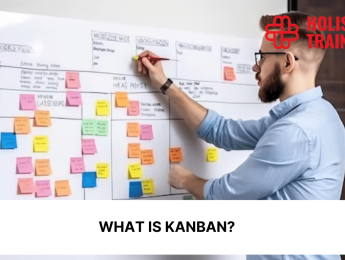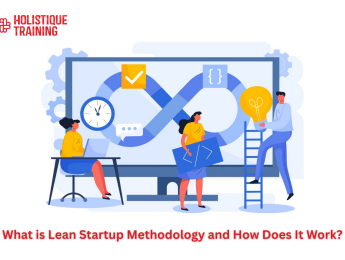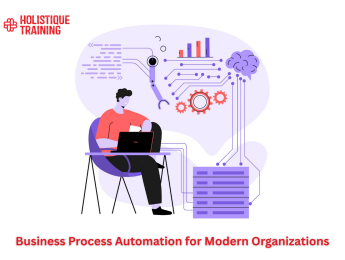- Table of Contents
- What Is Job Shadowing?
- Benefits of Job Shadowing
- 1. Authentic Insight into the Professional World
- 2. Networking Opportunities
- 3. Skill Development and Learning
- 4. Confidence Boost
- 5. Clarifying Career Goals
- 6. Exposure to Industry Trends
- 7. Diverse Perspectives and Inclusivity
- 8. Enhanced Resume and Interview Skills
- Examples of Job Shadowing
- Healthcare
- Engineering
- Journalism
- Marketing
- Job Shadowing, Internship, and Fellowship: Key Differences
- 1- Duration
- 2- Level of involvement
- 3- Learning objectives
- Candidates: How to Prepare for Job Shadowing
- 1- Research
- 2- Set clear goals
- 3- Dress appropriately
- 4- Be proactive
- 5. Respect Professional Etiquette
- 6. Bring Necessary Materials
- 7. Follow Up with Appreciation
- 8. Reflect on the Experience
- 9. Seek Feedback
- 10. Update Your Network
- Questions to Ask When Job Shadowing
- Interviewing Techniques for Recruiters: Selecting Ideal Candidates for Job Shadowing
- 1. Assessing Genuine Interest
- 2. Communication Skills
- 3. Adaptability and Open-Mindedness
- 4. Research and Preparedness
- 5. Problem-Solving and Critical Thinking
- 6. Motivation and Initiative
- 7. Teamwork and Collaboration
- 8. Understanding of Industry Trends
- 9. Alignment with Organisational Culture
- 10. Feedback from Past Experiences
- Virtual Job Shadowing
- The Rise of Virtual Job Shadowing
- Global Connectivity
- Flexibility and Accessibility
- Interactive Learning Platforms
- Networking in the Digital Space
- Adaptability to Remote Work Trends
- Tech-Driven Exploration
- Overcoming Physical Limitations
- Preparation for Remote Careers
- Dynamic Learning Environments
- Conclusion
Introduction
Choosing a career path can be daunting, especially when faced with countless options and limited real-world exposure. Job shadowing has emerged as an effective method to bridge this gap and gain valuable insights into different professions. Job shadowing allows individuals to experience a day in the life of a professional, providing firsthand knowledge of the career they are interested in pursuing. In this blog post, we will explore the concept of job shadowing, its benefits, examples, key differences between internships and fellowships, how to prepare for job shadowing, and questions to ask during the experience.
What Is Job Shadowing?
Job shadowing is a structured learning experience that allows individuals to observe professionals in their daily work environment. It involves spending a designated period with a mentor or professional in a specific field of interest, typically a day or several days. During this period, the shadowing participant closely observes their mentor's tasks, interactions, and responsibilities, gaining a comprehensive understanding of the profession and its associated challenges.
Benefits of Job Shadowing
Job shadowing is not just a casual observation; it's a transformative experience that opens doors to many benefits for individuals exploring potential career paths. Let's delve into the significant advantages that job shadowing offers.
1. Authentic Insight into the Professional World
One of the primary benefits of job shadowing is the authentic glimpse it provides into the day-to-day realities of a particular job or industry. It goes beyond the theoretical understanding gained from textbooks or online resources. By immersing oneself in the actual work environment, individuals witness the challenges, dynamics, and intricacies that define a profession. This firsthand experience is invaluable in helping aspiring professionals assess whether a career aligns with their passions and ambitions.
2. Networking Opportunities
Job shadowing isn't just about observing; it's about making connections. Through this experience, participants can establish meaningful relationships with industry professionals. These connections can prove instrumental in shaping one's career trajectory. Networking during job shadowing can lead to future opportunities such as internships, mentorships, or even job placements. Building a network early on in one's career can catalyse growth and success.
3. Skill Development and Learning
Beyond observing daily tasks, job shadowing provides a platform for skill development. Participants can witness and learn effective communication, problem-solving, and decision-making techniques directly from seasoned professionals. This practical exposure goes beyond what traditional education can offer, as it brings real-world scenarios to life. Additionally, the opportunity to understand workplace dynamics, including teamwork, time management, and organisational culture, contributes to developing a well-rounded skill set.
4. Confidence Boost
Engaging in job shadowing often leads to a transformative impact on an individual's confidence. According to statistical data from 360Learning, a notable 87% of mentors and mentees affirm that their mentoring relationships have a transformative impact. By seeing professionals in action and realising that they can navigate the challenges of the job, participants gain a newfound sense of confidence. This boost in self-assurance is a powerful motivator for individuals as they progress in their educational and professional journeys.
5. Clarifying Career Goals
Many individuals enter the workforce with a vague idea of their career goals. Job shadowing serves as a clarifying agent, helping participants refine their aspirations. By witnessing different aspects of a profession, individuals can identify the most appealing areas. This clarity aids in setting realistic career goals, allowing individuals to tailor their educational and professional pursuits to align with their newfound insights.
6. Exposure to Industry Trends
Industries are constantly evolving, with new trends and technologies shaping the landscape. Job shadowing provides a front-row seat to these changes. Participants can inquire about the industry's evolution, current trends, and future forecasts directly from those immersed in the field. This insight is invaluable for staying relevant and adaptable in a rapidly changing job market.
7. Diverse Perspectives and Inclusivity
Job shadowing also contributes to fostering diversity and inclusivity in the workforce. As individuals from various backgrounds and demographics engage in this experience, it promotes a more inclusive representation within different professions. This diversity not only enriches the learning experience but also contributes to breaking down barriers and stereotypes within industries.
8. Enhanced Resume and Interview Skills
Having firsthand experience through job shadowing enhances a participant's resume. It showcases a proactive approach to career exploration and a genuine interest in the chosen field. Moreover, the insights gained during job shadowing can be leveraged in interviews, demonstrating a deeper understanding of the profession and a commitment to personal and professional growth.
In summary, the benefits of job shadowing extend far beyond the initial observation period. From gaining authentic insights to building a network and developing essential skills, job shadowing is a multifaceted tool that empowers individuals to make informed decisions about their career paths. It is a dynamic experience that shapes professional aspirations and contributes to personal growth and development.
Examples of Job Shadowing
Job shadowing can be found across various industries and professions. Let's explore a few examples:
Healthcare
Aspiring doctors, nurses, or healthcare professionals often find immense value in job shadowing experienced practitioners. This experience involves observing medical procedures, patient interactions, and administrative tasks in a real clinical setting. From witnessing surgeries to understanding the intricacies of patient care, healthcare job shadowing provides invaluable insights into the multifaceted world of medicine.
Engineering
For budding engineers, job shadowing experienced professionals in different engineering disciplines is an enlightening experience. This may involve witnessing the design process, project management, and problem-solving techniques in action. Whether in civil engineering, mechanical engineering, or software development, job shadowing offers a firsthand look into the dynamic world of engineering.
Journalism
Aspiring journalists often benefit from shadowing reporters, editors, or news anchors to understand the process of gathering information, conducting interviews, and producing news stories. Journalism job shadowing offers a behind-the-scenes view of the fast-paced and dynamic media field.
Marketing
Individuals interested in marketing can shadow professionals to gain insights into strategic planning, market research, content creation, and campaign execution. Marketing job shadowing provides a comprehensive understanding of how businesses promote their products and connect with their target audience.
In each of these examples, job shadowing goes beyond observing daily tasks; it immerses participants in the core activities of the profession, providing a rich and nuanced understanding of what it truly means to work in these fields. This diversity of experiences underscores the flexibility and applicability of job shadowing across various industries, making it a valuable tool for anyone exploring potential career paths.
Job Shadowing, Internship, and Fellowship: Key Differences
While job shadowing shares similarities with internships and fellowships, it is essential to understand the distinctions:
1- Duration
Job shadowing typically lasts a short period, from a day to a few weeks. In contrast, internships and fellowships are more extended engagements, lasting several weeks to months.
2- Level of involvement
Job shadowing primarily involves observation, allowing individuals to shadow professionals without actively participating in tasks. Internships and fellowships, on the other hand, offer hands-on experience, often involving assignments and projects.
3- Learning objectives
Job shadowing focuses on providing insights and exposure to a particular career or industry. Internships and fellowships aim to offer practical experience and skill development relevant to the profession.
Candidates: How to Prepare for Job Shadowing
To maximise your job shadowing experience, thorough preparation is crucial. Here are a few essential steps to consider:
1- Research
Before stepping into the professional environment, conduct a thorough research about the profession, the organisation, and the specific role you will shadow. This knowledge will empower you to ask informed questions and engage meaningfully during the experience. Understand the industry trends, key players, and any recent developments that might be relevant to the role.
2- Set clear goals
Identify your objectives for the job shadowing experience. What do you hope to learn? Are there specific skills or aspects of the profession you are keen on observing? Setting clear goals will guide your observations and make the experience more purposeful. Whether you're interested in understanding the day-to-day tasks, gaining insights into problem-solving techniques, or exploring the organisational culture, having defined goals will help you make the most of the opportunity.
3- Dress appropriately
Professionalism is key during job shadowing. Dress appropriately for the workplace, adhering to any specific dress codes or guidelines the organisation provides. This demonstrates respect for the professional environment and ensures that you blend seamlessly into the workplace culture. Dressing professionally helps create a positive first impression and shows your commitment to the experience.
4- Be proactive
During the shadowing experience, actively engage with your mentor and colleagues. Don't be afraid to ask questions, seek clarification, and express your enthusiasm for the profession. Being proactive deepens your understanding of the role and leaves a positive impression. Professionals appreciate curiosity and a genuine interest in learning. Take initiative to participate in discussions and activities, showcasing your eagerness to make the most of the opportunity.
5. Respect Professional Etiquette
Understand and adhere to professional etiquette. This includes being punctual, respecting the privacy and confidentiality of the workplace, and being mindful of the established norms. Professionalism extends beyond your appearance; it encompasses your behaviour and interactions within the professional setting. Demonstrating respect for the workplace culture contributes to a positive and productive job shadowing experience.
6. Bring Necessary Materials
Come prepared with any materials or tools you might need during the job shadowing experience. This could include a notepad and pen for taking notes, a portfolio or resume, if applicable, and any other relevant documents. Having these materials on hand showcases your preparedness and readiness to engage in the learning process actively.
7. Follow Up with Appreciation
After the job shadowing experience, thank the professionals who hosted you. A thank-you email or note shows your appreciation for their time and insights. Additionally, it reinforces the positive impression you've made during the experience. If you've been provided with contact information, consider connecting with your mentor or colleagues on professional networking platforms to stay in touch.
8. Reflect on the Experience
Take the time to reflect on your job shadowing experience. What did you learn? How did the experience align with your career goals? Reflecting on the experience allows you to consolidate your observations and insights, helping you make more informed decisions about your career path. Consider jotting down key takeaways and areas for further exploration or skill development.
9. Seek Feedback
If appropriate, seek feedback on your performance during the job shadowing. Constructive feedback can be invaluable for your professional growth. It demonstrates your commitment to improvement and highlights your receptiveness to learning. Professionals often appreciate individuals who are open to feedback and show a genuine interest in refining their skills.
10. Update Your Network
If you made new connections during the job shadowing experience, update your professional network. Connect with individuals you interacted with on platforms like LinkedIn, and express your appreciation for the opportunity to shadow them. Building and maintaining a professional network is essential to career development, and job shadowing can be a catalyst for establishing meaningful connections.
Following these steps will prepare you for your job shadowing experience and position yourself for a more enriching and impactful learning journey. Job shadowing is not just about observing; it's an opportunity to engage with your chosen profession actively and lay the foundation for future career success.
Questions to Ask When Job Shadowing
Engaging in meaningful conversations during job shadowing can provide invaluable insights. Here are some questions to ask:
Interviewing Techniques for Recruiters: Selecting Ideal Candidates for Job Shadowing
Recruiters play a pivotal role in identifying candidates who not only possess the necessary qualifications but also are curious and eager to make the most out of a job shadowing opportunity. Conducting effective interviews ensures that individuals selected for job shadowing are a good fit for the profession and likely to gain maximum value from the experience. Here's a comprehensive guide on interviewing techniques for recruiters seeking the best candidates for job shadowing:
1. Assessing Genuine Interest
During the interview process, assess the candidate's genuine interest in the profession and the specific role they are considering for job shadowing. Ask open-ended questions about their motivations, what they hope to gain from the experience, and how it aligns with their long-term career goals. Look for candidates with thorough research and a sincere passion for the industry.
2. Communication Skills
Effective communication is crucial for a successful job shadowing experience. Evaluate the candidate's communication skills, including their ability to articulate thoughts, actively listen, and ask thoughtful questions. Since job shadowing involves observation and interaction, candidates with strong communication skills are likely to maximise the learning experience and engage meaningfully with professionals in the field.
3. Adaptability and Open-Mindedness
Job shadowing often involves exposure to diverse tasks and responsibilities. Assess the candidate's adaptability and open-mindedness by presenting hypothetical scenarios or challenges they might encounter during the shadowing experience. Look for individuals who demonstrate flexibility and a willingness to learn and adapt to different aspects of the profession.
4. Research and Preparedness
Candidates who come to the interview well-prepared are more likely to approach job shadowing with the same level of diligence. Inquire about their research on the profession, the organisation, and the specific role they are interested in shadowing. Candidates who clearly understand what to expect are more likely to make informed observations and ask relevant questions during the shadowing experience.
5. Problem-solving and Critical Thinking
Job shadowing exposes individuals to real-world scenarios that may require problem-solving and critical-thinking skills. Assess the candidate's ability to think on their feet by presenting them with a hypothetical situation related to the profession. Evaluate how they approach problem-solving, analyse information, and decide under pressure.
6. Motivation and Initiative
Look for candidates who exhibit motivation and initiative. Inquire about their past experiences where they took the lead or demonstrated a proactive approach to learning. Individuals who show initiative are more likely to engage during the job shadowing experience actively, seeking out opportunities to participate and learn beyond the observer role.
7. Teamwork and Collaboration
Professions often involve collaboration and teamwork. Assess the candidate's ability to work effectively in a team by discussing their past collaborative experiences or presenting team-based scenarios. Look for individuals who understand the importance of teamwork and can contribute positively to the dynamics of a professional setting.
8. Understanding of Industry Trends
Evaluate the candidate's awareness of industry trends and developments. A strong candidate should grasp the current landscape and be able to discuss how these trends might impact the profession they are interested in. This demonstrates a forward-thinking mindset and a genuine interest in staying informed about the industry.
9. Alignment with Organisational Culture
Consider how well the candidate aligns with the organisational culture of the company or institution where the job shadowing will occur. Assess their values, work ethic, and interpersonal skills to ensure a harmonious fit within the professional environment. Candidates who align with the organisation's culture are more likely to make a positive impact during the shadowing experience.
10. Feedback from Past Experiences
Inquire about the candidate's past experiences, whether through internships, volunteer work, or other learning opportunities. Ask for feedback from these experiences, focusing on what they learned, the challenges they faced, and how they applied their knowledge. This provides insights into their ability to reflect on and leverage past experiences for future growth.
By incorporating these interviewing techniques, recruiters can identify candidates who meet the technical qualifications and possess the qualities and attributes that will contribute to a successful and enriching job shadowing experience. Selecting candidates with the right mindset and enthusiasm ensures that job shadowing becomes a mutually beneficial learning journey for both the participants and the professionals in the field.
Virtual Job Shadowing
In our increasingly digitised world, the concept of job shadowing has evolved to meet the demands of a globalised and interconnected workforce. Virtual job shadowing has emerged as a dynamic and innovative approach, leveraging digital technologies to provide individuals with immersive experiences in the professional realm. Let's explore the nuances of virtual job shadowing and how it navigates the digital realm.
The Rise of Virtual Job Shadowing
In response to the growing influence of digital platforms, virtual job shadowing has become a prominent trend. This approach allows individuals to explore a day in the life of a professional without the constraints of physical proximity. Through online platforms, virtual reality, or video conferencing, participants can gain insights into various careers from the comfort of their homes.
Global Connectivity
One significant advantage of virtual job shadowing is the elimination of geographical barriers. Participants can connect with mentors and industry experts from around the world. This global connectivity broadens the scope of exploration, exposing individuals to diverse perspectives and practices within their chosen profession. It opens up possibilities for cross-cultural learning and understanding industry dynamics on a global scale.
Flexibility and Accessibility
Virtual job shadowing offers unparalleled flexibility. Participants can schedule virtual sessions at their convenience, accommodating different time zones and personal commitments. This accessibility makes job shadowing more inclusive, enabling individuals facing physical or logistical challenges to participate in the experience. The digital format also facilitates participation for those with limited resources or residing in remote areas.
Interactive Learning Platforms
Digital platforms provide interactive learning experiences during virtual job shadowing. Participants may be able to engage in simulated tasks, virtual tours, or interactive presentations that mimic real-world scenarios. These hands-on elements enhance the learning experience, allowing individuals to apply theoretical knowledge in a practical context. Virtual job shadowing platforms often leverage cutting-edge technologies to create engaging and immersive environments.
Networking in the Digital Space
While physical presence fosters organic networking, virtual job shadowing platforms incorporate digital networking opportunities. Participants can connect with mentors, professionals, and fellow job shadowers through online forums, virtual events, or social media groups. This digital networking aspect extends the reach of job shadowing beyond a single-day experience, fostering ongoing connections and collaborations.
Adaptability to Remote Work Trends
The rise of remote work trends has further highlighted the relevance of virtual job shadowing. As more professionals and organisations embrace remote work models, virtual job shadowing aligns seamlessly with this shift. Participants can gain insights into remote work practices, collaboration tools, and the dynamics of virtual teams, preparing them for the evolving landscape of the professional world.
Tech-Driven Exploration
Virtual job shadowing leverages technology to provide a tech-driven exploration of careers. From utilising virtual reality for immersive experiences to incorporating artificial intelligence for personalised learning paths, technology plays a central role in enhancing the effectiveness of virtual job shadowing. This tech-driven approach makes the experience more engaging and reflects the current and future trends in the digital workforce.
Overcoming Physical Limitations
Virtual job shadowing becomes a valuable alternative for individuals with physical disabilities or health concerns that limit mobility. It ensures that everyone has equal access to career exploration opportunities regardless of physical constraints. The digital realm becomes an equaliser, breaking down barriers and promoting inclusivity in the professional development landscape.
Preparation for Remote Careers
Participating in virtual job shadowing prepares individuals for the nuances of remote work and digital collaboration. Understanding how professionals navigate virtual meetings, use collaboration tools, and manage tasks in a remote setting becomes integral to preparing for careers in a rapidly evolving digital landscape.
Dynamic Learning Environments
Virtual job shadowing platforms create dynamic learning environments that evolve with technological advancements. These environments can simulate real-world scenarios, adapt to industry changes, and incorporate the latest tools and practices. This adaptability ensures that participants receive a current and relevant understanding of their chosen profession.
In conclusion, virtual job shadowing is not just a response to the digital era; it's a strategic adaptation that enhances the traditional job shadowing experience. By navigating the digital realm, individuals can explore careers in a global context, embrace flexibility, and prepare for the digital future of work. As technology advances, virtual job shadowing remains a powerful tool for career exploration and professional development in the digital age.
Conclusion
Job shadowing offers a unique opportunity to gain firsthand experience and insights into a chosen profession. By observing professionals in their natural work environments, individuals can make informed decisions about their career paths. The benefits of job shadowing extend beyond mere observation, as it fosters networking, skill development, and a realistic understanding of the profession. Whether you're a student exploring career options or considering a career change, job shadowing can be an invaluable tool to guide your decision-making process and set you on the path to a fulfilling and successful career.






















